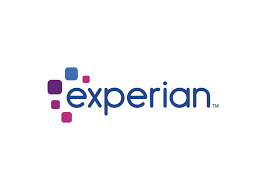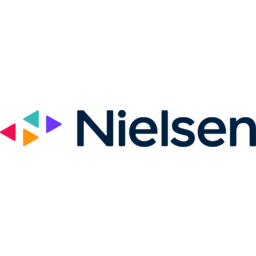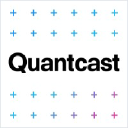Access Our Private Auction Deals for Curated Audiences & Premium Inventory
Welcome to our curation house. We are offering selected partners access to private auctions of premium inventory on an invitation-only basis.

By
John Davis
Friday, July 19, 2024 at 1.11 p.m.
Curated audiences and media auction packages open new doors for
advertisers and
agencies
who already use a DSP to execute their own programmatic media buying. We are offering selected partners access to private auctions of premium inventory on an invitation-only basis..
Benefits of Using PMP Deal IDs
Learn more about the value for advertisers, agencies, and publishers in participating in our Private Marketplace of curated audience and advertising inventory.
- On-board Your First-Party Data for Multiple DSPs: If you’re paying each DSP fees to on-board and house your first-party data, we can help you minimize your costs and streamline your workflows.
- Supply Path Optimization (SPO): When you apply your deal ID to your campaign within your DSP, you can be confident that you are paying the SSP, Ad Exchange, and publisher for the inventory you want.
- Consume Less Energy & Reduce Your Carbon Footprint: When you bid on inventory from your deal ID, your bid will not be duplicated across multiple SSPs. In this way, you can avoid bidding against yourself. You’ll also reduce the number of auctions publishers need to execute to sell their inventory.
- Cookieless Activation: We can craft cookieless audience/inventory packages that help you reach prospects within mobile and OTT apps, on Safari browsers, and other cookie-challenged environments.
- New Revenue Streams for Publishers: Packaging your premium inventory in a curated deal is a straightforward way to serve programmatic advertisers. Also, we can help media companies create new revenue streams via audience extension offerings, giving advertisers access to publishers’ valuable audiences across formats and devices without compromising on brand values or privacy compliance. This approach creates scale not available when a publisher has limited inventory for shorter campaigns. You can also easily expand your advertising offerings across new platforms and formats without expensive in-house investments.
- New Revenue Stream for Retailers: We can apply your customer purchase data to premium inventory in a way that opens new commercial options. Your consumer packaged goods (CPG) suppliers can spend more of their promotional budgets with you to move the needle on sales of their products within your stores.
How Does a PMP Auction Work?
Private Marketplace (PMP) auctions are a more refined version of the typical real-time bidding (RTB) process. Think of them as an exclusive, members-only club for programmatic advertising -- invite-only, selective, and built for transparency.
Instead of throwing your hat into the crowded ring of open auctions, a PMP limits participation to pre-approved advertisers and agencies. Each partner uses a unique Deal ID to access premium ad inventory, often from high-quality publishers like The New York Times or The Wall Street Journal.
Here’s what sets a PMP auction apart:
- Selective Participation: Only advertisers with an invitation and a Deal ID can join, so you know exactly who’s bidding alongside you.
- Greater Transparency: You get clear information about where your ads will appear, removing much of the guesswork common in open exchanges.
- Direct Relationships: These auctions happen directly with publishers or their authorized partners, helping to simplify the supply path and increase efficiency.
In short, a PMP auction gives you access to top-tier inventory in a controlled environment—ideal for campaigns that demand both reach and quality.
Why Have PMPs Become More Popular in Recent Years?
Private Marketplaces (PMPs) have surged in popularity for several compelling reasons. Unlike open exchanges, PMPs provide advertisers and publishers with greater control over how and where ads appear. This enhanced control helps both parties ensure their brand messaging lands in appropriate, high-quality environments.
Additionally, as third-party cookies fade into the digital sunset, publishers and brands crave more transparent data and audience segmentation. PMPs answer that call by offering better insights and targeting capabilities, making ad spend more efficient and results-driven.
All these factors combined make PMPs an increasingly attractive choice for brands and publishers seeking trust, transparency, and tangible results from their programmatic advertising efforts.
Scaling Challenges for Mid-Market Publishers and Advertisers
Despite the benefits of curated deal IDs and private marketplaces, there are still significant hurdles facing mid-level publishers and advertisers looking to scale their use of PMPs.
- Operational Complexity: Setting up and managing private marketplaces requires time, expertise, and resources that may not be available to every team. Integrating with multiple DSPs, negotiating deals, and maintaining reporting processes can be daunting for those without dedicated programmatic resources.
- Resource Limitations: Unlike large enterprises, mid-market advertisers and publishers might not have the bandwidth or technology to manage deal IDs at scale, optimize supply paths efficiently, or customize inventory packaging to their specific needs.
Who Offers PMPs?
Private Marketplace (PMP) deals are commonly offered by major publishers known for their high-quality content and significant audience reach. Publishers like The New York Times, The Wall Street Journal, and CNN are typical examples, as they maintain strict control over their inventory and want to ensure their ad placements uphold brand reputation. These well-established sites open their premium ad inventory to select advertisers through PMPs, providing transparency on what’s available and where your ads will appear.
By working with these top-tier publishers, advertisers gain access to highly sought-after audiences and placements that aren’t available through the open exchange, creating a more controlled and brand-safe environment for campaigns.
“Today’s complex and fragmented supply chain has now made it difficult for publishers to optimize their revenue — which was the appeal of programmatic to begin with — and has left them receiving only around half of advertiser spend on average according to ISBA, while a third of supply chain costs seemingly vanish into thin air.”Use the form below to request access to our private marketplace of deals IDs that curate audiences and media inventory.
— Stephen Cutbill, General manager, UK, Yieldmo
“By sitting in the middle, agencies can source supply from the publishers they care about most, package that inventory in unique ways, enrich it with additional data, track and direct spend across all trading partners on the fly while exercising preferential rates and terms with preferred partners. All this without disrupting the programmatic buying process across their favoured DSPs.”
— Joe Meehan, SVP of The MediaGrid, formerly IPONWEB
Source: ExchangeWire.com
DOWNLOADABLE GUIDE
Make AI, Curation, and SPO Work for You
Get up to speed on how organizations are adapting to AI, Curation, and other developments in programmatic advertising.
Leverage Programmatic in 2025
Thank you for your interest. You can access the presentation here.
Please let us know if we should be working together.
Oops, there was an error sending your message. Please contact info@CrowdLouder.com.
Activate Your Audience
We will get back to you as soon as possible.
Please try again later.





